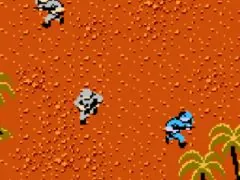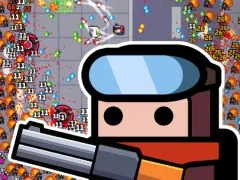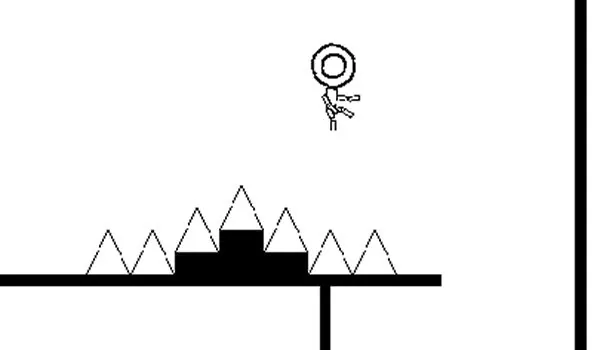AGE OF WAR
SIMILAR GAMES
Description
Age of War - Unblocked WTF
About Age of War - Unblocked WTF
We are delighted to present an in-depth exploration of **Age of War**, a truly engaging and strategic defense game that captivates players with its compelling gameplay mechanics and progressive historical narrative. This particular iteration, accessible and playable through our platform, offers a gateway to an expansive and rewarding gaming experience. It is a title that seamlessly blends elements of real-time strategy, resource management, and tower defense into a cohesive and addictive package. Our aim is to provide a comprehensive understanding of what makes **Age of War** such a standout experience, detailing its core features, strategic depth, and the inherent thrill of leading your civilization from its humble beginnings to its ultimate technological zenith.
The Core Gameplay Loop of Age of War
At its heart, **Age of War** is a game of **persistent warfare and technological evolution**. Players are tasked with defending their base against waves of attacking enemies while simultaneously building up their own forces and advancing through distinct historical eras. The game unfolds on a single, horizontal battlefield, where both your base and the enemy's base are positioned at opposite ends. The objective is to destroy the opposing base before they manage to destroy yours. This fundamental goal necessitates a dual focus on **offense and defense**, a balance that players must master to achieve victory.
The gameplay begins in the **Stone Age**, the earliest period of human history. Here, players command primitive units such as **cavemen** armed with basic clubs and **spearmen** who offer a slightly longer reach. Resource management is critical from the outset. Players must generate a steady income of **gold**, the primary currency in the game, by training specific units. These trained units not only serve as your offensive force but also contribute to your gold generation, creating a dynamic interplay between military might and economic growth. Early game strategy often revolves around a calculated decision: do you invest heavily in offensive units to push back the enemy quickly, or do you focus on economic units to ensure a stronger gold income for later, more advanced eras?
As the game progresses, players earn experience points by defeating enemy units and successfully defending their base. Accumulating enough experience allows you to **advance to the next era**. This is where the true brilliance of **Age of War** shines. Each era introduces entirely new units, defensive structures, and technological upgrades, dramatically altering the strategic landscape. Transitioning from the Stone Age to the **Bronze Age**, for instance, brings about more formidable warriors like **swordsmen** and the introduction of ranged units, such as **archers**, which can inflict damage from a distance, providing crucial support for your frontline troops.
The game continues to cycle through historical epochs, including the **Iron Age**, the **Medieval period**, the **Renaissance**, the **Gunpowder era**, and culminating in the **Futuristic Age**. Each transition is marked by significant advancements. Imagine the shift from rudimentary melee combat to the introduction of **musketeers** and **cannons**, capable of devastating barrages. Later, players will command **tanks**, **helicopters**, and even **robots** armed with laser weaponry. The visual and tactical transformation between eras is profound, ensuring that **Age of War** remains fresh and engaging throughout multiple playthroughs.
Strategic Depth and Unit Diversity
The strategic depth of **Age of War** is one of its most compelling features. Players are not simply tasked with spamming the strongest available units. Instead, they must carefully consider the **rock-paper-scissors dynamic** that exists between different unit types. For example, while powerful melee units can be effective against infantry, they might be vulnerable to ranged attacks. Conversely, fast-moving units can flank slower, more heavily armored foes. Understanding these relationships is paramount.
Furthermore, the game introduces **different types of units** within each era, each with its own strengths and weaknesses. There are typically:
- Melee Units: These are your frontline soldiers, designed to engage the enemy directly and absorb damage. Examples include cavemen, swordsmen, and knights.
- Ranged Units: Positioned behind your melee units, these units provide supporting fire and can attack from a safer distance. Archers, musketeers, and snipers fall into this category.
- Siege Units: Capable of dealing heavy damage to enemy structures and clustered enemy units, these are crucial for breaking through defenses. Cannons and artillery are prime examples.
- Special Units: Some eras introduce unique units with special abilities, such as flying units or units that can deploy defenses.
Beyond unit composition, players also have access to a range of **defensive structures**. Initially, this might be as simple as improving your base’s health. As you advance, you can unlock and build **turrets** and other fortifications that automatically attack approaching enemies. The placement and upgrading of these defenses are as critical as the units you deploy. A well-defended base can withstand a significant onslaught, giving you the time needed to build up your offensive capabilities.
The **tech tree** is another vital component of the strategic layer. For each era, players can invest their earned experience points into researching new technologies. These technologies can manifest in several ways:
- Unit Upgrades: Enhancing the stats of existing units, making them stronger, faster, or more resilient.
- New Unit Unlocks: Gaining access to entirely new unit types that become available for training.
- Global Enhancements: Improvements that benefit all your units or defenses, such as increased gold generation rates or faster unit production.
Deciding which technologies to prioritize can significantly impact your game. Some players might focus on unlocking powerful late-game units as quickly as possible, while others might opt for incremental upgrades that bolster their overall efficiency throughout the game. This element of choice ensures that no two games of **Age of War** play out exactly the same way.
The Journey Through Human History
**Age of War** offers a compelling narrative journey that mirrors the progression of human civilization. This historical theme is not merely cosmetic; it is deeply integrated into the gameplay, providing context and a sense of accomplishment as players witness their civilization evolve.
- Stone Age: The dawn of humanity. Players start with basic, primitive units and must learn the fundamental mechanics of resource management and defense. It’s a period of survival and the very first steps towards organized warfare.
- Bronze Age: The advent of metalworking brings more organized and effective weaponry. Players can train more specialized units and begin to explore more complex strategies.
- Iron Age: Further advancements in metallurgy lead to stronger and more diverse units. Warfare becomes more sophisticated as players contend with increasingly challenging enemy forces.
- Medieval Period: Knights, archers, and siege engines emerge. This era often involves more entrenched defenses and coordinated assaults.
- Renaissance: The seeds of gunpowder technology are sown, and warfare begins to shift towards ranged combat and strategic positioning.
- Gunpowder Era: Firearms and cannons revolutionize the battlefield. Players must adapt to the devastating power of artillery and the effectiveness of projectile weapons.
- Futuristic Age: The pinnacle of technological advancement. Players command advanced military hardware, including tanks, helicopters, and robots, engaging in high-tech combat.
The visual progression from crude stone tools to advanced laser weaponry is a testament to the game's design. Each era feels distinct, not only in terms of the units and technologies available but also in the overall aesthetic and atmosphere of the battlefield. This constant evolution keeps players engaged, eager to see what the next age will bring and how their strategies will need to adapt.
Mastering the Battlefield: Tips and Strategies
For players looking to excel in **Age of War**, a few key strategies can make a significant difference. Understanding the core mechanics is just the first step; applying them effectively is where true mastery lies.
- Early Game Aggression vs. Defense: While tempting to push hard early, consider the long-term implications. Sometimes, a slightly more defensive posture in the very early stages, focusing on a balanced economy and a few strong defensive units, can set you up for a more dominant mid- and late-game.
- Unit Composition is Key: Never underestimate the importance of a diverse army. Always have a mix of melee, ranged, and potentially siege units appropriate for the current era. Countering the enemy’s composition is more effective than simply producing your strongest unit in mass.
- Strategic Technology Investment: Prioritize technologies that offer the most significant immediate or long-term advantage. Sometimes, a small but consistent gold income boost can be more valuable than a single powerful unit upgrade. Similarly, unlocking a new, highly effective unit type can be a game-changer.
- Utilize Defensive Structures Wisely: Don't just build defenses haphazardly. Place them in strategic locations where they can cover your base effectively and provide supporting fire for your offensive pushes. Upgrade them when feasible.
- Patience and Timing: **Age of War** is not always about frantic button-mashing. There are moments when it is crucial to pause, assess the enemy's strength, and plan your next move. Knowing when to launch a full-scale assault versus when to consolidate your defenses is a learned skill.
- Adapt to the Enemy: Pay close attention to the units the enemy is sending. If they are relying heavily on ranged units, invest in melee units that can close the distance. If they are overwhelming you with fast attackers, consider units with area-of-effect damage or defensive structures that can slow them down.
- Upgrade Your Base: While often overlooked in favor of unit production, upgrading your base's health and defenses can provide crucial survivability, especially during intense enemy assaults.
Why Age of War is a Timeless Classic
The enduring appeal of **Age of War** lies in its perfect synergy of accessibility and depth. It is easy enough for new players to pick up and enjoy within minutes, yet it offers enough strategic complexity to keep seasoned gamers engaged for hours on end. The constant sense of progression, the visual spectacle of evolving warfare, and the thrill of outmaneuvering a formidable opponent all contribute to a highly satisfying gaming experience.
The game's design ensures that players are always presented with meaningful choices. Every decision, from which unit to train next to which technology to research, has a tangible impact on the outcome of the battle. This player agency is fundamental to its addictive quality. Furthermore, the clear objective and the satisfying feedback loop of earning experience, advancing eras, and unlocking new capabilities create a compelling momentum that drives players forward.
For those seeking an engaging and mentally stimulating pastime, **Age of War** delivers. It’s a game that rewards strategic thinking, adaptability, and a well-executed plan. The ability to play this captivating title on our platform ensures that this classic gaming experience is readily available for anyone looking to test their strategic mettle and lead their civilization to ultimate victory.
Age of War is a captivating blend of strategy and defense where players lead their civilizations through multiple eras of human history, battling against a relentless opponent determined to topple their empire. Starting in the Stone Age, players must manage their resources to train units, build defenses, and advance their civilization’s technology to progress through successive ages. Each era brings unique units and technologies, ranging from prehistoric cavemen wielding clubs to futuristic warriors armed with advanced weaponry. The game challenges players to balance offense and defense, strategically deploying units along a single battlefield lane to counter enemy forces and protect their own base.
Strategic Deployment and Technological Advancement
As players progress in Age of War, they must decide when and how to spend their resources on upgrading their capabilities and moving to the next age. Advancing through ages unlocks more powerful units and defense mechanisms, but also costs resources that could otherwise be used to deploy more units for immediate battlefield impact. Strategic timing is crucial, as players must fend off increasingly powerful waves of enemy attacks while trying to push back and destroy the enemy base. The game also features special attacks and abilities, which can be used to turn the tide of battle in critical moments, adding an additional layer of depth and strategy to the gameplay.
Age of War combines simple yet deep strategic elements with a seamless progression through historical epochs, making it a game that is easy to pick up but challenging to master. Players must constantly adapt their strategies to the evolving capabilities of their own and their opponent’s forces, making each playthrough a dynamic and engaging experience. Whether deploying dinosaurs or robots, the goal remains the same: evolve, outsmart, and conquer.















































